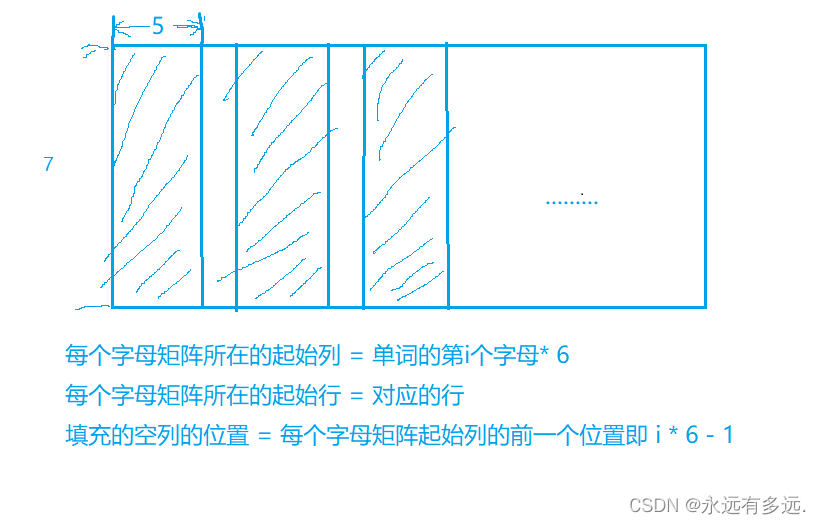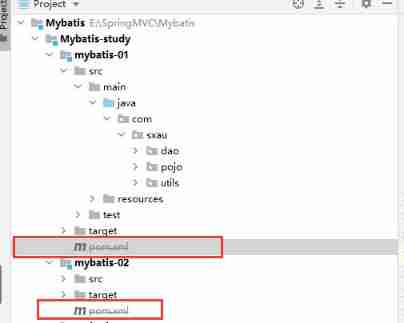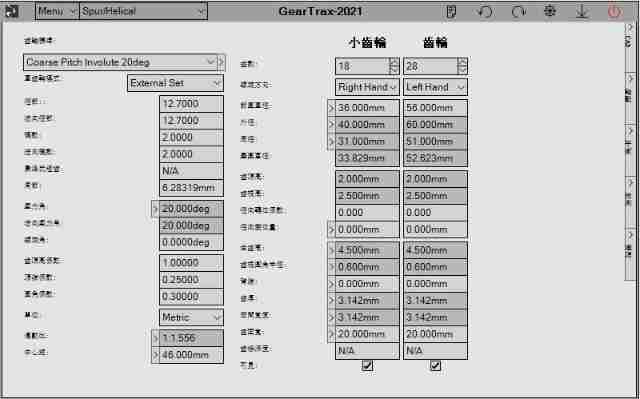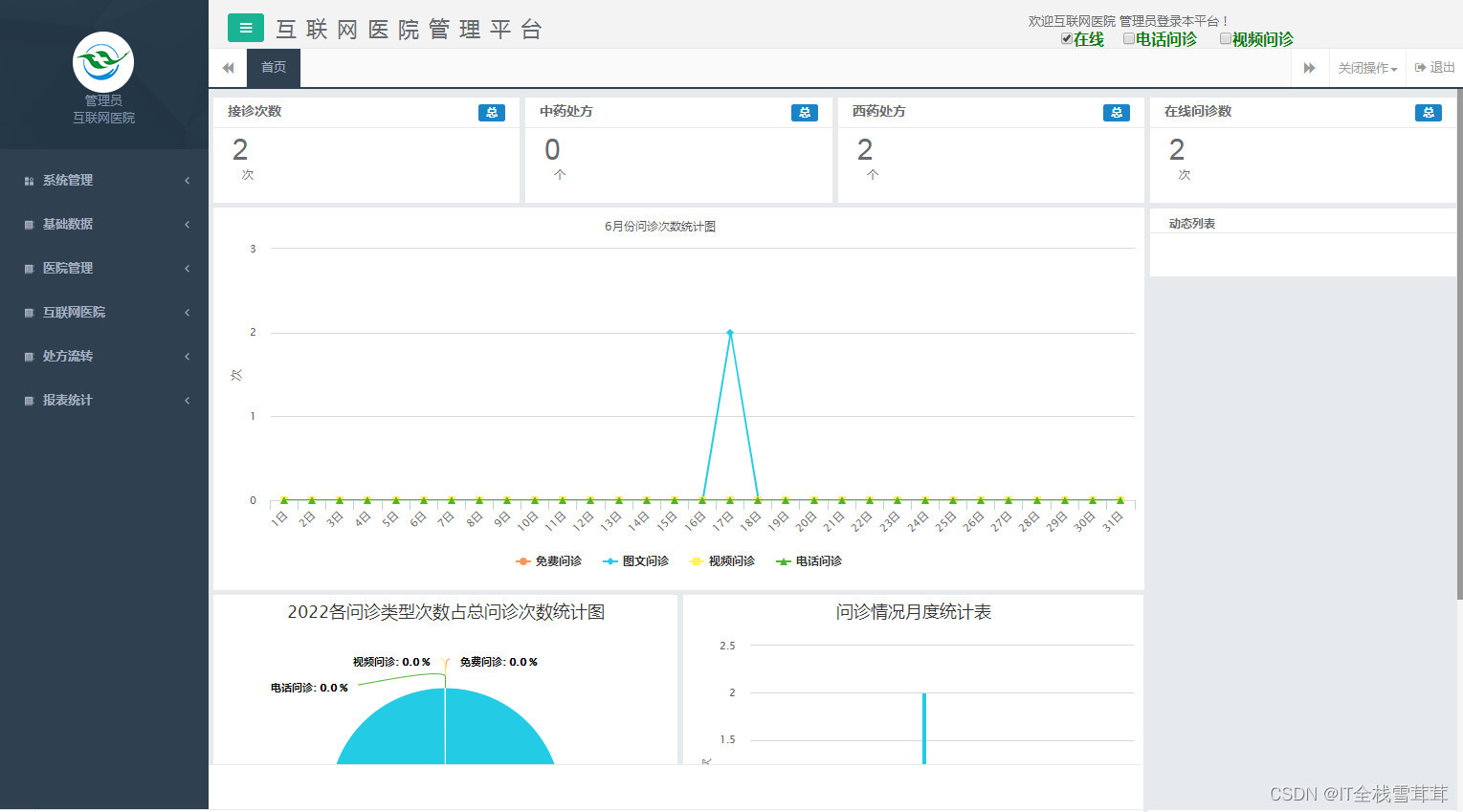当前位置:网站首页>Kotlin's collaboration: Context
Kotlin's collaboration: Context
2022-07-03 17:43:00 【okclouderx】
Kotlin The context of the collaboration is called CoroutineContext, Usually used to switch thread pools .
CoroutineContext Application
launch
launch The first parameter of context yes CoroutineContext, The default value is EmptyCoroutineContext.
If you need to specify launch Working thread pool , You need to specify CoroutineContext Parameters .
public fun CoroutineScope.launch(
context: CoroutineContext = EmptyCoroutineContext,
start: CoroutineStart = CoroutineStart.DEFAULT,
block: suspend CoroutineScope.() -> Unit
): Job {
val newContext = newCoroutineContext(context)
val coroutine = if (start.isLazy)
LazyStandaloneCoroutine(newContext, block) else
StandaloneCoroutine(newContext, active = true)
coroutine.start(start, coroutine, block)
return coroutine
}
withContext
withContext Used to switch thread execution code . Its first parameter is CoroutineContext, Specify thread pool .
public suspend fun <T> withContext(
context: CoroutineContext,
block: suspend CoroutineScope.() -> T
): T {
}
stay getUserInfoIo It is specified in withContext The context is Dispatchers.IO.
fun main() = runBlocking {
val user = getUserInfoIo()
logX(user)
}
suspend fun getUserInfoIo(): String {
logX("Before IO Context.")
withContext(Dispatchers.IO) {
logX("In IO Context.")
delay(1000)
}
logX("After IO Context.")
return "BoyCoder"
}
Output is as follows :
================================
Before IO Context.
Thread:main @coroutine#1, time:1656560405319
================================
================================
In IO Context.
Thread:DefaultDispatcher-worker-1 @coroutine#1, time:1656560405351
================================
================================
After IO Context.
Thread:main @coroutine#1, time:1656560406360
================================
================================
BoyCoder
Thread:main @coroutine#1, time:1656560406361
================================
You can see in the Thread:DefaultDispatcher-worker-1 Thread execution coroutine 1. Other codes in main Threads .
suspend main
main Function has suspend The version of the keyword , You can directly execute the suspend function .
suspend fun main() {
val user = getUserInfoIo()
logX(user)
}
It and runBlocking The difference is that withContext After switching threads , All implemented in DefaultDispatcher-worker-1 Threads .
================================
Before IO Context.
Thread:main, time:1656569681374
================================
================================
In IO Context.
Thread:DefaultDispatcher-worker-1, time:1656569681440
================================
================================
After IO Context.
Thread:DefaultDispatcher-worker-1, time:1656569682449
================================
================================
BoyCoder
Thread:DefaultDispatcher-worker-1, time:1656569682449
================================
runBlocking
runBlocking The first parameter of CoroutineContext, The default is EmptyCoroutineContext.
public fun <T> runBlocking(context: CoroutineContext = EmptyCoroutineContext, block: suspend CoroutineScope.() -> T): T {
}
You can give runBlocking Add custom CoroutineContext.
fun main() = runBlocking(Dispatchers.IO) {
val user = getUserInfoIo()
logX(user)
}
Output is as follows :
================================
Before IO Context.
Thread:DefaultDispatcher-worker-2 @coroutine#1, time:1656570311862
================================
================================
In IO Context.
Thread:DefaultDispatcher-worker-2 @coroutine#1, time:1656570311896
================================
================================
After IO Context.
Thread:DefaultDispatcher-worker-2 @coroutine#1, time:1656570312903
================================
================================
BoyCoder
Thread:DefaultDispatcher-worker-2 @coroutine#1, time:1656570312903
================================
You can see the increase Dispatchers.IO after , The coordination process has been implemented in DefaultDispatcher-worker-2 Threads .
Dispatchers Scheduler
Kotlin Built in Dispatchers Yes 4 Kind of , They all inherit essentially CoroutineContext.
- Default: Default scheduler , be used for CPU Intensive task , The number of threads is consistent with the number of cores .
- Main: Main thread scheduler , Only in Android、Swing etc. UI The platform is useful , Ordinary JVM The project cannot be used .
- UnConfined: Unlimited scheduler , A coroutine may run on any thread .
- IO:IO Scheduler , be used for IO Intensive task , There will be more threads , such as 64 Threads
public actual object Dispatchers {
/** * The default [CoroutineDispatcher] that is used by all standard builders like * [launch][CoroutineScope.launch], [async][CoroutineScope.async], etc * if no dispatcher nor any other [ContinuationInterceptor] is specified in their context. * * It is backed by a shared pool of threads on JVM. By default, the maximal level of parallelism used * by this dispatcher is equal to the number of CPU cores, but is at least two. * Level of parallelism X guarantees that no more than X tasks can be executed in this dispatcher in parallel. */
@JvmStatic
public actual val Default: CoroutineDispatcher = createDefaultDispatcher()
/** * A coroutine dispatcher that is confined to the Main thread operating with UI objects. * This dispatcher can be used either directly or via [MainScope] factory. * Usually such dispatcher is single-threaded. * * Access to this property may throw [IllegalStateException] if no main thread dispatchers are present in the classpath. * * Depending on platform and classpath it can be mapped to different dispatchers: * - On JS and Native it is equivalent of [Default] dispatcher. * - On JVM it is either Android main thread dispatcher, JavaFx or Swing EDT dispatcher. It is chosen by * [`ServiceLoader`](https://docs.oracle.com/javase/8/docs/api/java/util/ServiceLoader.html). * * In order to work with `Main` dispatcher, the following artifacts should be added to project runtime dependencies: * - `kotlinx-coroutines-android` for Android Main thread dispatcher * - `kotlinx-coroutines-javafx` for JavaFx Application thread dispatcher * - `kotlinx-coroutines-swing` for Swing EDT dispatcher * * In order to set a custom `Main` dispatcher for testing purposes, add the `kotlinx-coroutines-test` artifact to * project test dependencies. * * Implementation note: [MainCoroutineDispatcher.immediate] is not supported on Native and JS platforms. */
@JvmStatic
public actual val Main: MainCoroutineDispatcher get() = MainDispatcherLoader.dispatcher
/** * A coroutine dispatcher that is not confined to any specific thread. * It executes initial continuation of the coroutine in the current call-frame * and lets the coroutine resume in whatever thread that is used by the corresponding suspending function, without * mandating any specific threading policy. Nested coroutines launched in this dispatcher form an event-loop to avoid * stack overflows. * * ### Event loop * Event loop semantics is a purely internal concept and have no guarantees on the order of execution * except that all queued coroutines will be executed on the current thread in the lexical scope of the outermost * unconfined coroutine. * * For example, the following code: * ``` * withContext(Dispatchers.Unconfined) { * println(1) * withContext(Dispatchers.Unconfined) { // Nested unconfined * println(2) * } * println(3) * } * println("Done") * ``` * Can print both "1 2 3" and "1 3 2", this is an implementation detail that can be changed. * But it is guaranteed that "Done" will be printed only when both `withContext` are completed. * * * Note that if you need your coroutine to be confined to a particular thread or a thread-pool after resumption, * but still want to execute it in the current call-frame until its first suspension, then you can use * an optional [CoroutineStart] parameter in coroutine builders like * [launch][CoroutineScope.launch] and [async][CoroutineScope.async] setting it to the * the value of [CoroutineStart.UNDISPATCHED]. */
@JvmStatic
public actual val Unconfined: CoroutineDispatcher = kotlinx.coroutines.Unconfined
/** * The [CoroutineDispatcher] that is designed for offloading blocking IO tasks to a shared pool of threads. * * Additional threads in this pool are created and are shutdown on demand. * The number of threads used by this dispatcher is limited by the value of * "`kotlinx.coroutines.io.parallelism`" ([IO_PARALLELISM_PROPERTY_NAME]) system property. * It defaults to the limit of 64 threads or the number of cores (whichever is larger). * * Moreover, the maximum configurable number of threads is capped by the * `kotlinx.coroutines.scheduler.max.pool.size` system property. * If you need a higher number of parallel threads, * you should use a custom dispatcher backed by your own thread pool. * * This dispatcher shares threads with a [Default][Dispatchers.Default] dispatcher, so using * `withContext(Dispatchers.IO) { ... }` does not lead to an actual switching to another thread — * typically execution continues in the same thread. */
@JvmStatic
public val IO: CoroutineDispatcher = DefaultScheduler.IO
}
Dispatchers.IO
Dispatchers.IO May reuse Dispatchers.Default The thread of . As can be seen from the above example , Although the setting is Dispatchers.IO, the truth is that DefaultDispatcher-worker Threads .
take runBlocking Of CoroutineContext Change it to Dispatchers.Default
fun main() = runBlocking(Dispatchers.Default) {
val user = getUserInfoIo()
logX(user)
}
The output is as follows :
================================
Before IO Context.
Thread:DefaultDispatcher-worker-1 @coroutine#1, time:1656575072324
================================
================================
In IO Context.
Thread:DefaultDispatcher-worker-1 @coroutine#1, time:1656575072358
================================
================================
After IO Context.
Thread:DefaultDispatcher-worker-1 @coroutine#1, time:1656575073366
================================
================================
BoyCoder
Thread:DefaultDispatcher-worker-1 @coroutine#1, time:1656575073367
================================
You can see withContext Switch to IO after , Also used. DefaultDispatcher-worker-1. This is because Dispatchers.Default By Dispatchers.IO Reuse threads .
Customize Dispatchers
Use custom executor And then convert to Dispatcher As CoroutineContext.
val mySingleDispatcher = Executors.newSingleThreadExecutor {
Thread(it, "mySingleThread").apply {
isDaemon = true
}
}
.asCoroutineDispatcher()
fun main() = runBlocking(mySingleDispatcher) {
val user = getUserInfoIo()
logX(user)
}
Output is as follows :
================================
Before IO Context.
Thread:mySingleThread @coroutine#1, time:1656575809476
================================
================================
In IO Context.
Thread:DefaultDispatcher-worker-1 @coroutine#1, time:1656575809510
================================
================================
After IO Context.
Thread:mySingleThread @coroutine#1, time:1656575810521
================================
================================
BoyCoder
Thread:mySingleThread @coroutine#1, time:1656575810521
================================
Only In IO Context Running on the DefaultDispatcher-worker-1, Other code runs in custom dispatcher.
Dispatchers.Unconfined
If launch Use the default context, The order of execution is 1、4、2、3.
fun main() = runBlocking {
logX("Before launch") // 1
launch {
logX("In launch") // 2
delay(1000)
logX("End launch") // 3
}
logX("After launch") // 4
}
Output is as follows
================================
Before launch
Thread:main @coroutine#1, time:1656576229645
================================
================================
After launch
Thread:main @coroutine#1, time:1656576229677
================================
================================
In launch
Thread:main @coroutine#2, time:1656576229679
================================
================================
End launch
Thread:main @coroutine#2, time:1656576230686
================================
If launch Use Unconfined, The order of execution is uncertain .
fun main() = runBlocking {
logX("Before launch") // 1
launch(Dispatchers.Unconfined) {
logX("In launch") // 2
delay(1000)
logX("End launch") // 3
}
logX("After launch") // 4
}
Output is as follows
================================
Before launch
Thread:main @coroutine#1, time:1656576759031
================================
================================
In launch
Thread:main @coroutine#2, time:1656576759055
================================
================================
After launch
Thread:main @coroutine#1, time:1656576759060
================================
================================
End launch
Thread:kotlinx.coroutines.DefaultExecutor @coroutine#2, time:1656576760059
================================
The order of execution changes to 1、2、4、3. And the mark 3 Execute on DefaultExecutor.
Dispatchers.Unconfined May execute on any thread , It should not be used casually Dispatchers.Unconfined.
CoroutineScope Process scope
Use launch when , There has to be CoroutineScope Process scope ,launch yes CoroutineScope The extension function of .
CoroutineScope Is very simple to implement , It is an interface class , Only coroutineContext member .
public interface CoroutineScope {
/** * The context of this scope. * Context is encapsulated by the scope and used for implementation of coroutine builders that are extensions on the scope. * Accessing this property in general code is not recommended for any purposes except accessing the [Job] instance for advanced usages. * * By convention, should contain an instance of a [job][Job] to enforce structured concurrency. */
public val coroutineContext: CoroutineContext
}
Specify custom CoroutineScope, Use scope start-up 3 Collaborators cheng , Achieve structured concurrency .
fun main() = runBlocking {
val scope = CoroutineScope(Job())
scope.launch {
logX("first start")
delay(1000)
logX("first end")
}
scope.launch {
logX("second start")
delay(1000)
logX("second end")
}
scope.launch {
logX("third start")
delay(1000)
logX("third end")
}
delay(500)
scope.cancel()
delay(1000)
}
Output is as follows
================================
first start
Thread:DefaultDispatcher-worker-2 @coroutine#2, time:1656577491658
================================
================================
third start
Thread:DefaultDispatcher-worker-3 @coroutine#4, time:1656577491663
================================
================================
second start
Thread:DefaultDispatcher-worker-1 @coroutine#3, time:1656577491660
================================
all scope All started processes are canceled , No further execution .
Job and Dispatcher
Job
Job Inherited CoroutineContext.Element.
public interface Job : CoroutineContext.Element {
}
Element Inherit CoroutineContext
@kotlin.SinceKotlin public interface CoroutineContext {
public interface Element : kotlin.coroutines.CoroutineContext {
}
}
therefore Job Itself is CoroutineContext.
Dispatchers
Dispatchers It's a singleton class , There are 4 Presets Dispatchers.
public actual object Dispatchers {
}
With Default For example , It is CoroutineDispatcher class , The inheritance relationship is as follows :
CoroutineDispatcher -> ContinuationInterceptor -> CoroutineContext.Element -> CoroutineContext
therefore Dispatchers It's also CoroutineContext.
CoroutineContext The design of the
CoroutineContext Design method and Map The design method of is very similar .
public interface CoroutineContext {
public operator fun <E : Element> get(key: Key<E>): E?
public fun <R> fold(initial: R, operation: (R, Element) -> R): R
public operator fun plus(context: CoroutineContext): CoroutineContext =
public fun minusKey(key: Key<*>): CoroutineContext
- get amount to map Of get
- fold amount to map Of foreach
- plus amount to map Of put
- minusKey amount to map Of remove
utilize CoroutineContext The interface of , You can write + 、[] This set like operation . because CoroutineContext Reload the plus The operator , It can be used + Instead of plus; heavy load get The operator , It can be used [] Instead of get.
@OptIn(ExperimentalStdlibApi::class)
fun main() = runBlocking {
val scope = CoroutineScope(Job() + mySingleDispatcher)
scope.launch {
logX(coroutineContext[CoroutineDispatcher] == mySingleDispatcher)
delay(500)
logX("first end")
}
delay(500)
scope.cancel()
delay(1000)
}
Output is as follows
================================
true
Thread:mySingleThread @coroutine#2, time:1656584502696
================================
It can be seen that CoroutineContext Inside dispatchers Namely mySingleDispatcher.
CoroutineName The name of the project
CoroutineName You can specify the process name , Its essence is also CoroutineContext.
@OptIn(ExperimentalStdlibApi::class)
fun main() = runBlocking {
val scope = CoroutineScope(Job() + mySingleDispatcher)
scope.launch(CoroutineName("MyFirstCoroutine")) {
logX(coroutineContext[CoroutineDispatcher] == mySingleDispatcher)
delay(500)
logX("first end")
}
delay(500)
scope.cancel()
delay(1000)
}
Output is as follows
================================
true
Thread:mySingleThread @MyFirstCoroutine#2, time:1656584886943
================================
The name of the collaboration process changes to CoroutineName Defined MyFirstCoroutine,#2 It's a journey id.
CoroutineExceptionHandler Exception handling of coroutine
CoroutineExceptionHandler Used to catch exceptions in the process , So is it CoroutineContext.
@OptIn(ExperimentalStdlibApi::class)
suspend fun main() {
val scope = CoroutineScope(Job() + mySingleDispatcher)
val handler = CoroutineExceptionHandler {
_, throwable ->
println("catch exception $throwable")
}
val job = scope.launch(handler) {
logX(coroutineContext[CoroutineDispatcher] == mySingleDispatcher)
val str: String? = null
str!!.length
logX("first end")
}
job.join()
}
Output is as follows
================================
true
Thread:mySingleThread @coroutine#1, time:1656585762125
================================
catch exception java.lang.NullPointerException
Deliberately throw a null pointer exception , And then to CoroutineExceptionHandler Capture .
Suspend functions and CoroutineContext
suspend The suspend function can directly access coroutineContext.
suspend fun testCoroutineContext() = coroutineContext
fun main() = runBlocking {
print(testCoroutineContext())
}
Output is as follows
[CoroutineId(1), "coroutine#1":BlockingCoroutine{
Active}@63e2203c, [email protected]1efed156]
The suspended function needs to be run in a coroutine or another suspended function , Therefore, it can also access the cooperative process CoroutineContext.
coroutineContext yes Continuation.kt Internal members of .
public suspend inline val coroutineContext: CoroutineContext
get() {
throw NotImplementedError("Implemented as intrinsic")
}
summary
- CoroutineContext Process context and map Is very similar , and map equally , It can be added or obtained Element.
- Job、Dispatchers、CoroutineName、CoroutineExceptionHandler Nature is CoroutineContext.
- CoroutineScope Encapsulates the CoroutineContext,CoroutineContext yes CoroutineScope Members of .
- suspend The suspend function is also similar to CoroutineContext of . The pending function should be run in the coroutine , Xiecheng has its CoroutineContext, Therefore, the suspended function can also access CoroutineContext.
边栏推荐
- Brief introduction to the core functions of automatic penetration testing tool
- AcWing 4489. Longest subsequence
- 问题随记 —— 在 edge 上看视频会绿屏
- TCP congestion control details | 3 design space
- QT learning diary 9 - dialog box
- kubernetes资源对象介绍及常用命令(四)
- Basic grammar of interview (Part 2)
- ArrayList分析3 : 删除元素
- Records of long objects and long judgments in the stream of list
- [combinatorics] recursive equation (special solution form | special solution solving method | special solution example)
猜你喜欢
![How to read the source code [debug and observe the source code]](/img/40/a2fca67bcde3c468a739c6990325f4.jpg)
How to read the source code [debug and observe the source code]

【RT-Thread】nxp rt10xx 设备驱动框架之--Audio搭建和使用

1164 Good in C
![Luogu: p1155 [noip2008 improvement group] double stack sorting (bipartite graph, simulation)](/img/be/4ef38f711e7319a2cc83db2bee3a07.jpg)
Luogu: p1155 [noip2008 improvement group] double stack sorting (bipartite graph, simulation)

Market demand survey and marketing strategy analysis report of global and Chinese pet milk substitutes 2022-2028

POM in idea XML graying solution

Introduction to SolidWorks gear design software tool geartrax
![[UE4] brush Arctic pack high quality Arctic terrain pack](/img/e7/bc86bd8450b0b2bdec8980a2aa1a10.jpg)
[UE4] brush Arctic pack high quality Arctic terrain pack

Test your trained model

Internet hospital his management platform source code, online consultation, appointment registration smart hospital applet source code
随机推荐
Discussion sur la logique de conception et de mise en oeuvre du processus de paiement
Records of long objects and long judgments in the stream of list
企业级自定义表单引擎解决方案(十一)--表单规则引擎1
Applet setting multi account debugging
Research Report on investment trends and development planning of China's thermal insulation material industry, 2022-2028
[RT thread] construction and use of --hwtimer of NXP rt10xx device driver framework
link preload prefetch
【RT-Thread】nxp rt10xx 设备驱动框架之--Audio搭建和使用
Online assignment 3 of mobile Internet technology in the 20th autumn of electronic technology [standard answer]
Basic grammar of interview (Part 2)
[combinatorics] recursive equation (the non-homogeneous part is an exponential function and the bottom is the characteristic root | example of finding a special solution)
Y is always discrete and can't understand, how to solve it? Answer: read it several times
POM in idea XML graying solution
c# .net 工具生态
Leetcode 108 converts an ordered array into a binary search tree -- recursive method
MinGW compile boost library
【RT-Thread】nxp rt10xx 设备驱动框架之--Pin搭建和使用
自动渗透测试工具核心功能简述
鸿蒙第三次培训
TensorBoard快速入门(Pytorch使用TensorBoard)